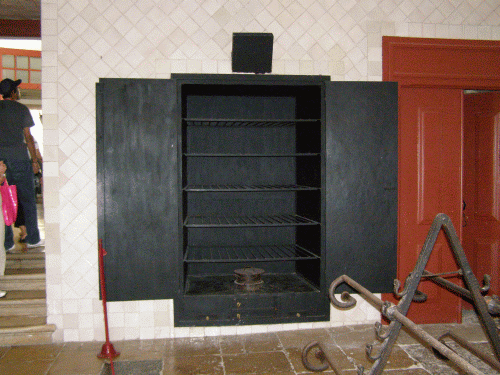"I've been rich and I've been poor. Believe me, honey, rich is better." – Sophie Tucker (among others!)
While trimming spare ribs into St. Louis style ribs this morning I recalled the simple, yet wonderful, sentiments of Sophie Tucker. Given the choice between having and not having – having is better. Why did these words pop into my head while trimming pork ribs? Because as my freshly sharpened knife cut easily through both meat and bone I couldn’t help recalling the times when I tried the same cuts with dull knives.
If I may, let me paraphrase Sophie. I’ve used sharp knives and I’ve used dull knives. Believe me, sharp is better.
Most BBQ cooks understand this principle, yet do enough of us understand how to turn that principle into a reality? Sure, we want sharp knives; we crave sharp knives. But at the end of the day do we have sharp knives?
In fact, are we actually dulling our knives with the traditional tools most of us carry with us from competition to competition? Well, I wouldn’t be writing this if I thought the answer was “no.”
Perhaps one of the most important tools for keeping a sharp edge between actual sharpening is the “steel.” You know, that long rod with ridges that comes with every Henkels and Wusthof knife set! You all have one….don’t you? Of course you do!
Because I don’t want to insult your intelligence I won’t bother explaining that a steel won’t actually sharpen a knife. You probably already understand that the purpose of a steel is to re-align the edge because as a knife is used the edge tends to curl – thus taking that sharpness away. Each of you is already an expert at removing that curl by passing the knife across a steel.
But did you know that not all steels are created equal? You have your typical “new with the set” steel - these are characterized by long ridges running up and down the length of the tool. Then there’s the butcher’s steel - a long piece of steel with no ridges. Then there’s the ceramic “steel” – which actually comes close to being a sharpener because most of them have a grit like quality.
If you are going to bother re-aligning your knives with a steel do yourself a favor. Use one that actually helps you keep the knife sharp. I recommend using either the smooth butcher's style steel or a ceramic hone. In an email with knife sharpener Dave Martell (this guy's my hero!) Dave passed along some words of wisdom about using a steel:
A friend of mine send me some pictures a few years back that clearly showed what most of us pro sharpeners already knew and that's the typical grooved steel damages knife edges. It appears that the sharpcorners of the cut out grooves will grab and tear the edge which in turn leaves a jagged deformed surface behind. This jagged edge is what cuts, or rather tears, at the food.


1 comment:
Great Read..... Thanks.
Post a Comment